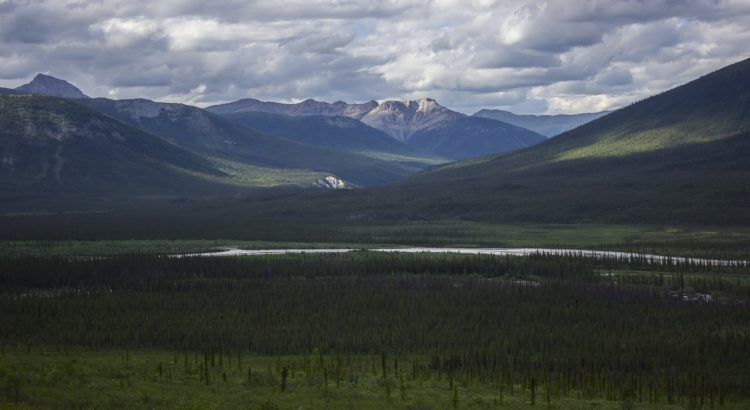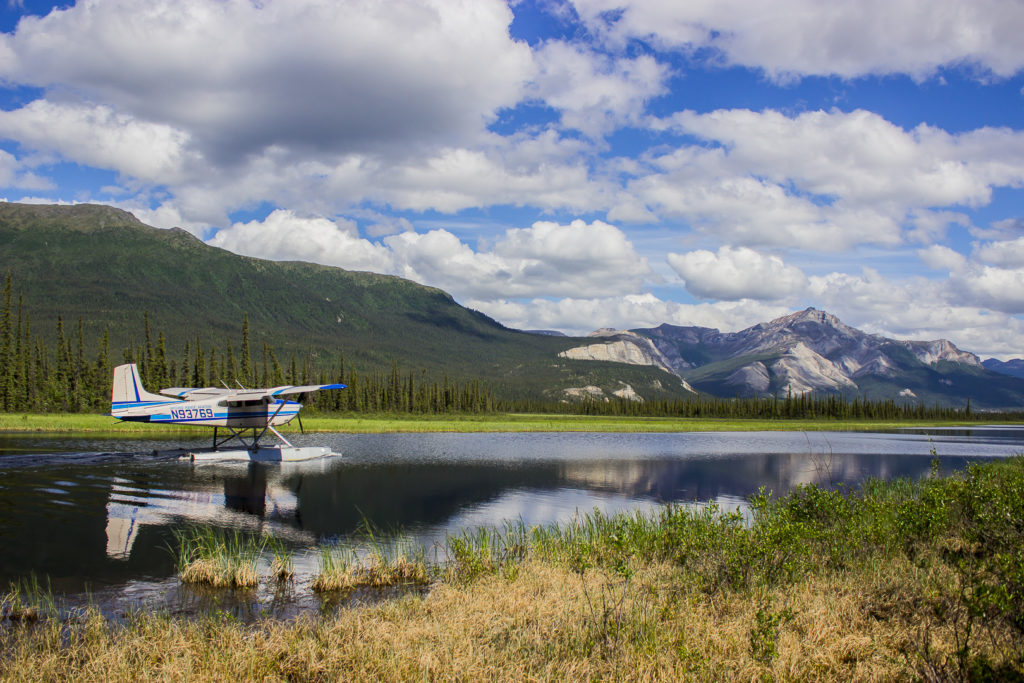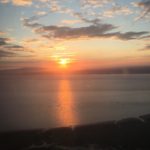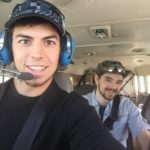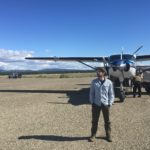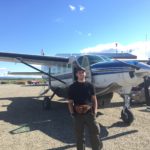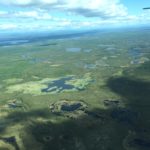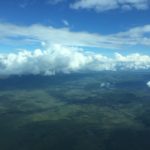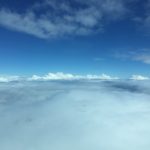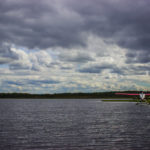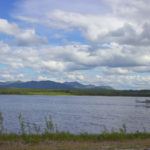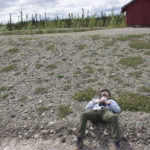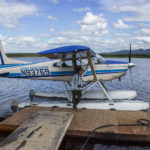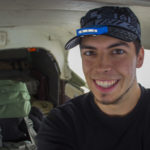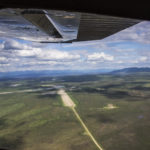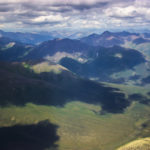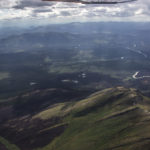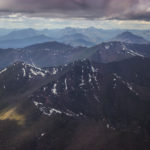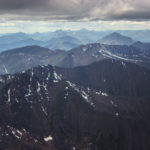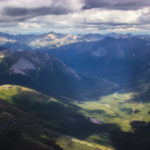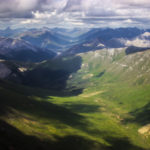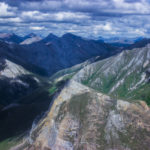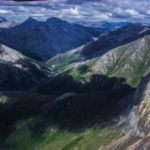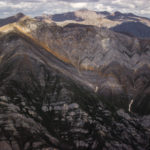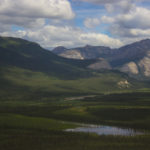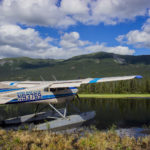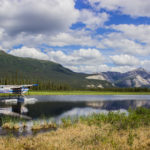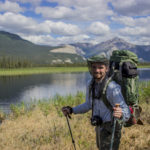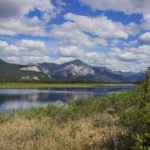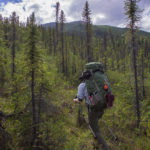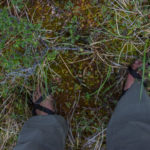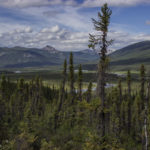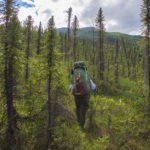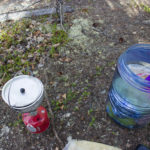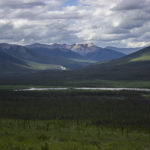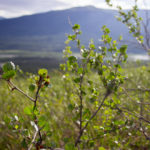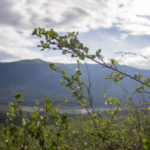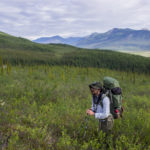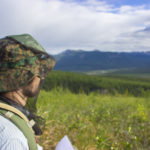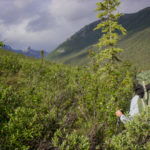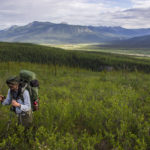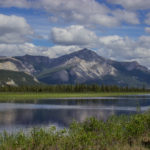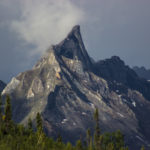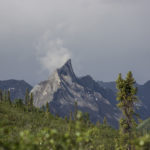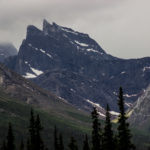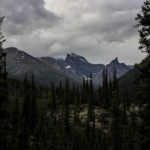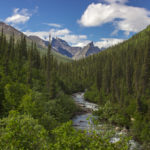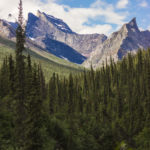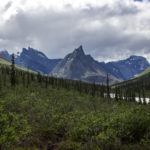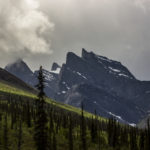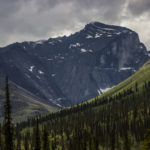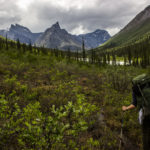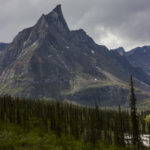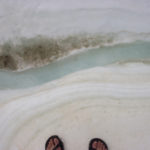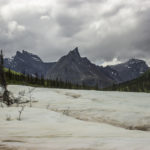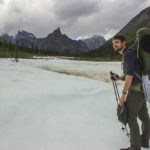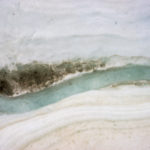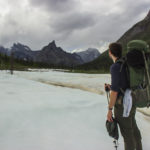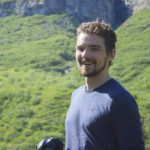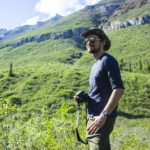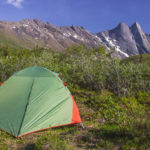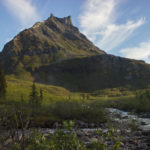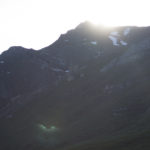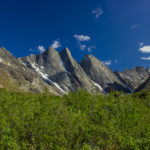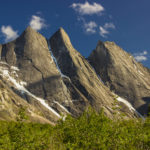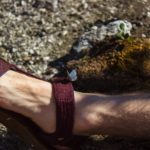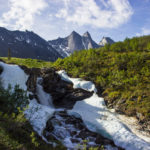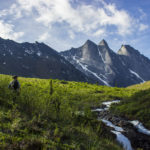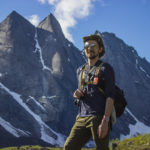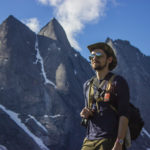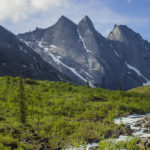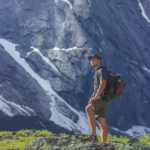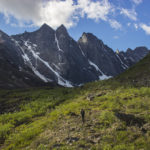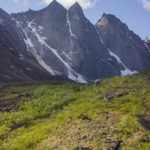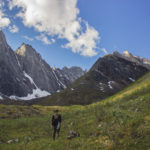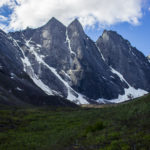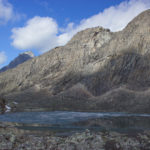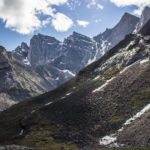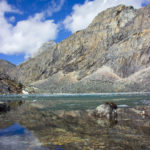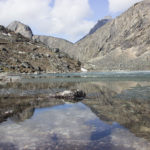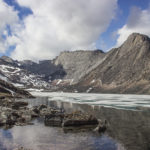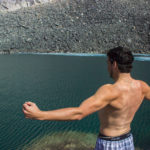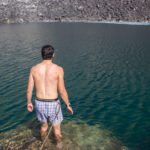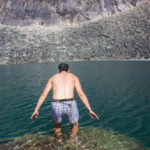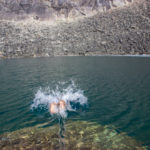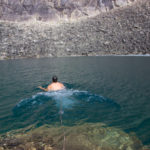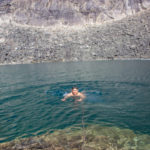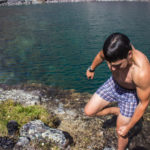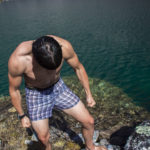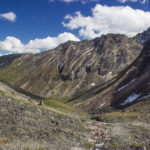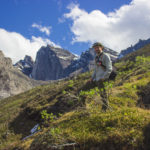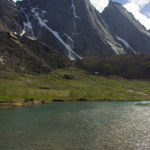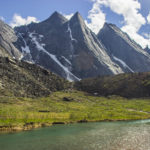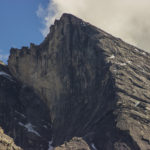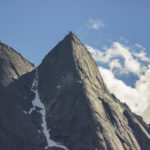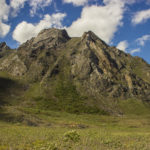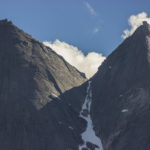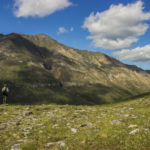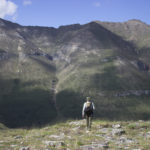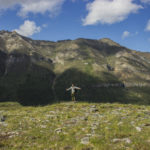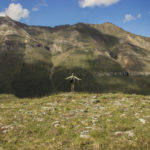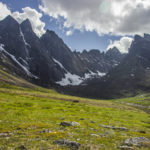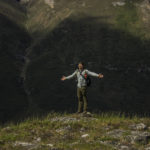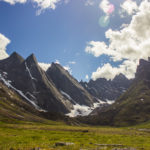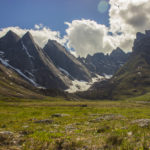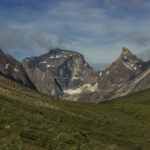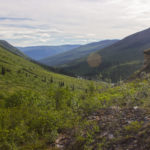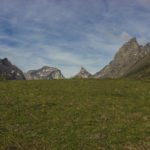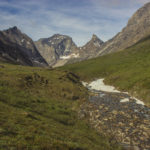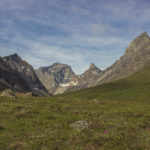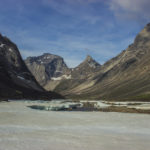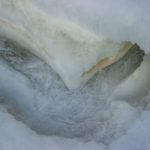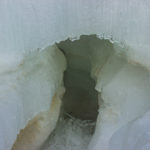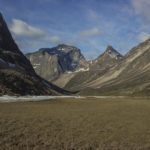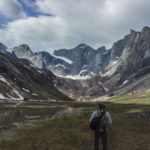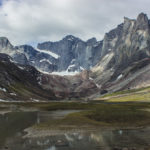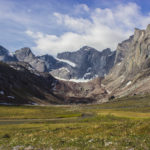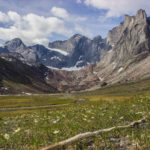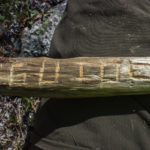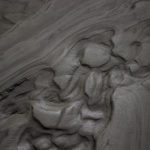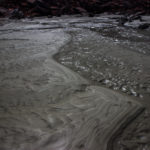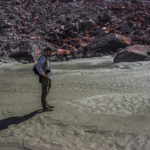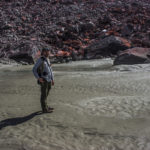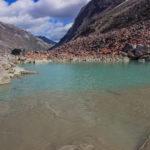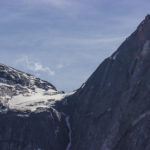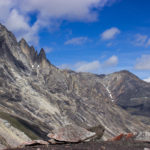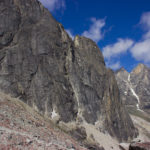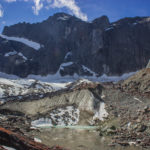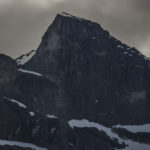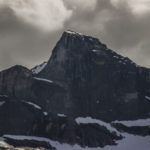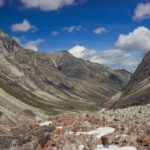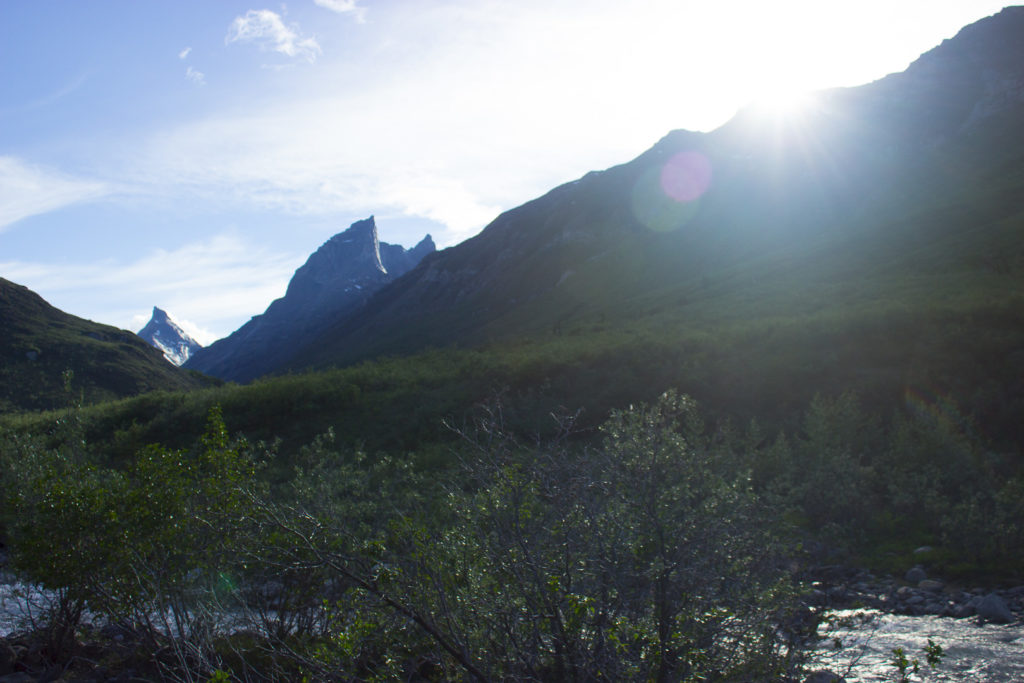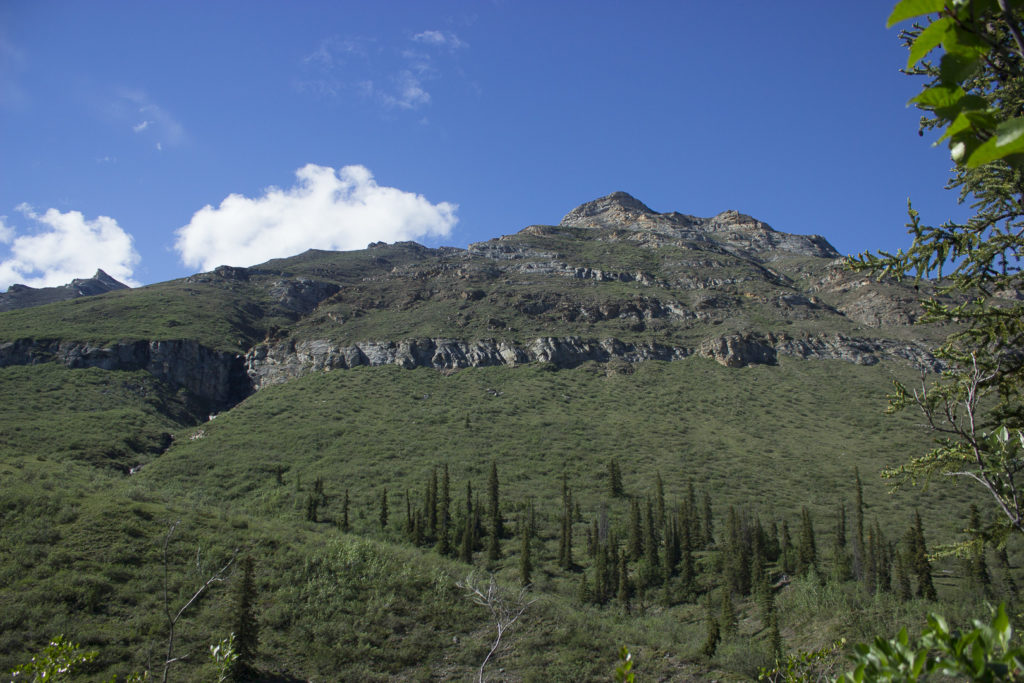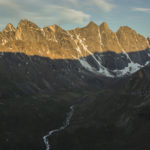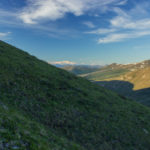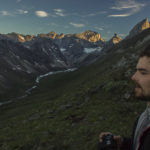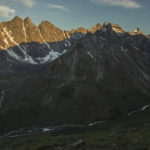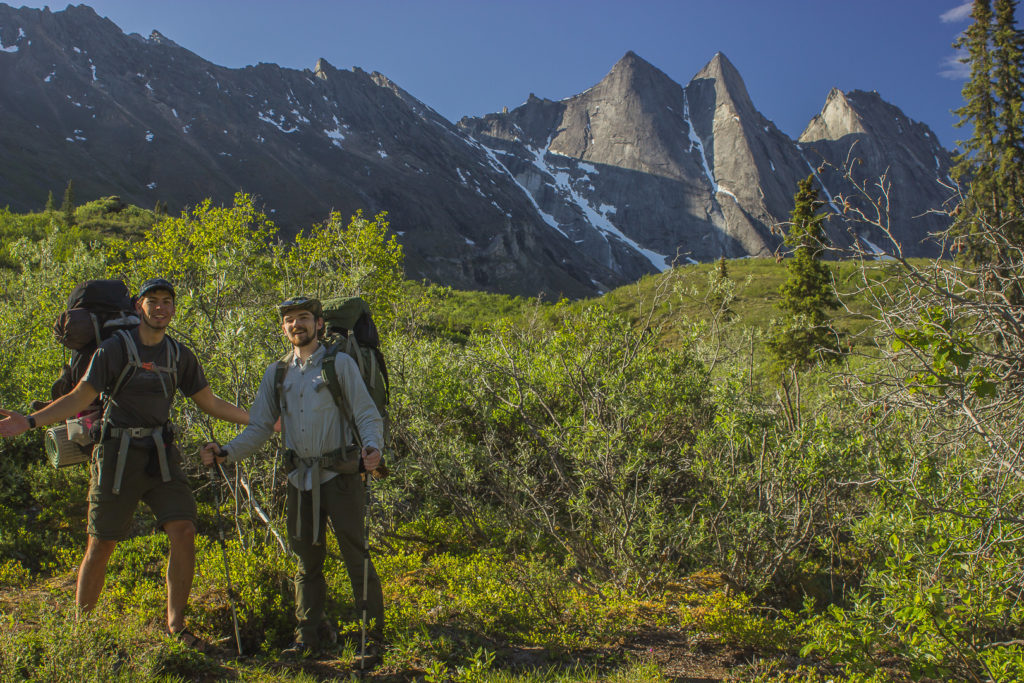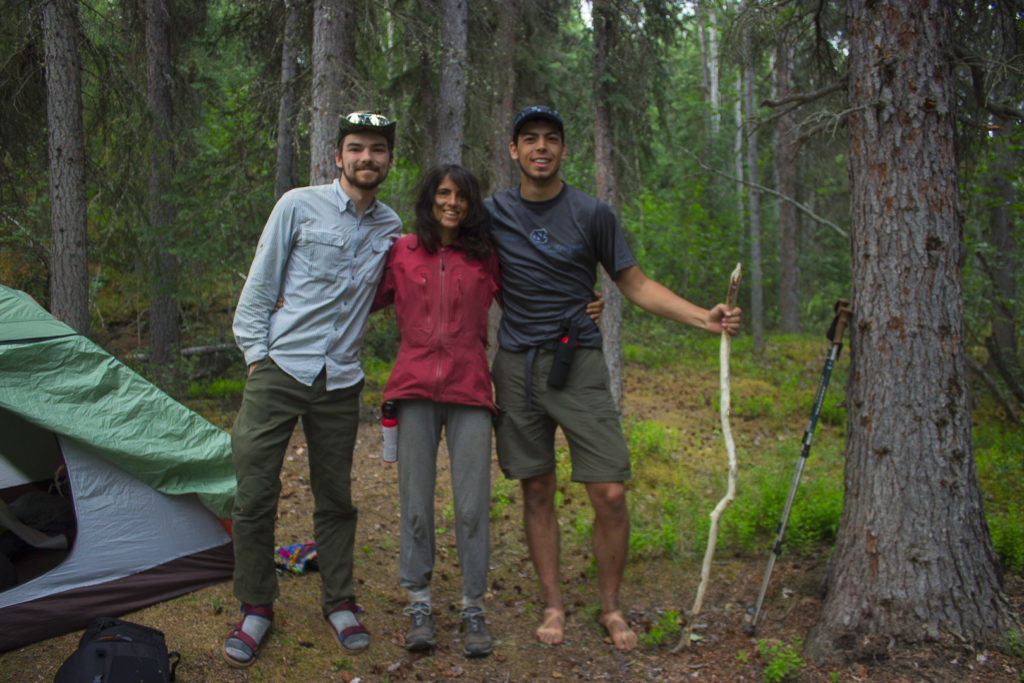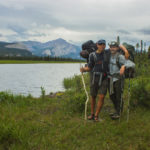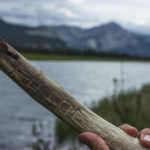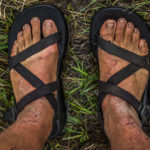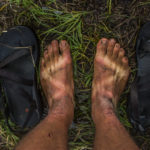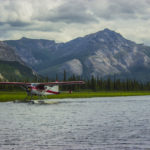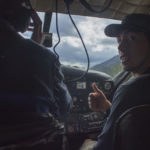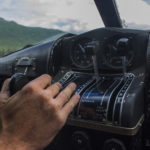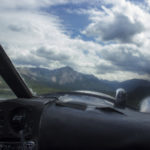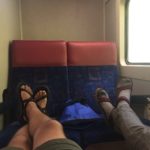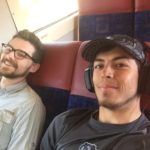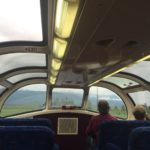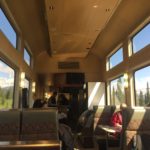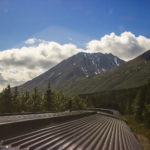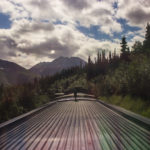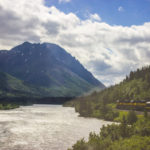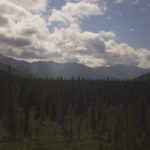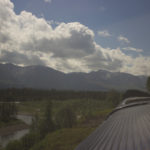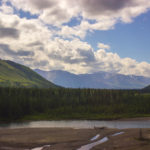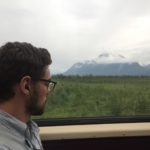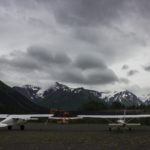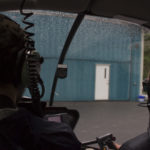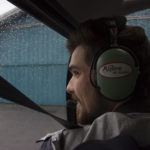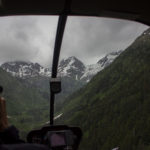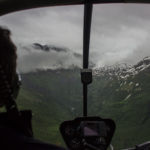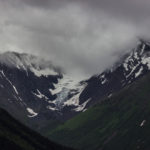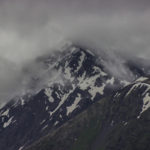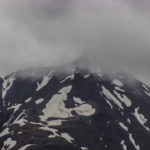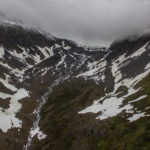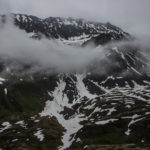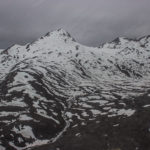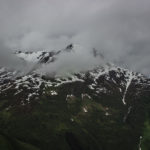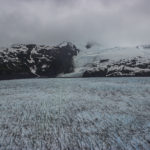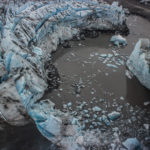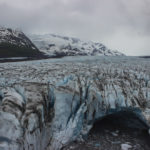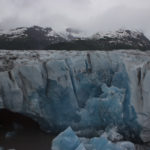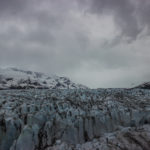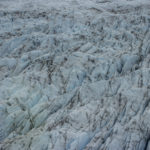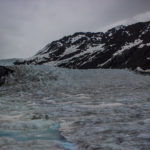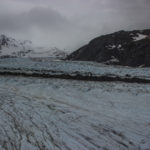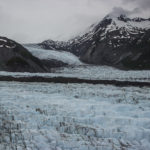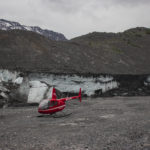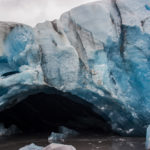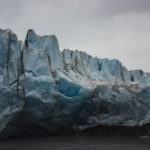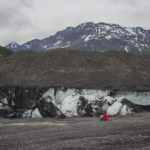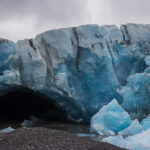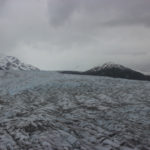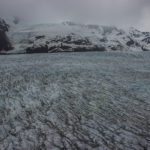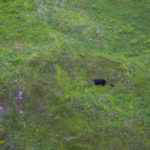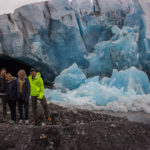Alaska has taken me for a ride. A week and a half up in the last frontier has been an adventure, no matter how much planning I did.
I was joined by my fellow traveler and lifelong partner in crime, my stepbrother Mitch Harris. It’s an understatement to say we would need each other to make this trip the amazing adventure it would be.
And maybe Mitch learned what happens when he indulges me on my hair-brained schemes…
Part 1: Getting Nowhere
This trip was planned for six months, but dreamed long before. Alaska had always been at the top of our high adventure list. When I got my hands on a flight voucher, we booked for Fairbanks and started planning where to go.
It turns out Alaska is a big place, with no chance to see even a fraction of everything, but we ultimately decided the best thing to do was to use the chance to get out into true wilderness and travel to the Brooks Mountain Range. A rugged range that sits north of the Arctic Circle, in the 1980s it was set aside as sweeping expanse of “true wilderness” free of any influence by human society.
Starting in bustling Charlotte, North Carolina, Mitch and I loaded up our packs and boarded a jumbo jetliner, first to Phoenix, then to Anchorage, and finally into Fairbanks, the heart of Alaska.
Our journey to the wilderness was only just beginning.
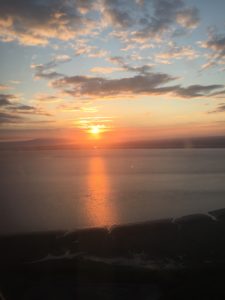
We landed at midnight local time (for us, 4am, making already a 14 hour travel day so far), and made for our bed for the evening, a Travelodge motel. At 10am the next day we were back at the airport boarding a much smaller propeller plane heading north towards Bettles, our jumping off point to the wilderness. It turns out there weren’t too many people headed to little Bettles, so the pilot gave us a bit of a scenic experience as we went on our way.
Bettles is the ultimate in small towns. It can only be accessed by plane in the summer (there is an ice road some months of the winter), and so as a result there is only one gravel road through the town, which is largely built right around the airport.
Upon landing we reported to the National Park Service ranger station for a wilderness briefing. Unlike other places run by NPS, there is largely no regulation in the park, the rangers only ask for a plan for people entering the area, and adherence to leave no trace principles as much as possible.
This is wilderness, in the Brooks Mountains there will be no designated trails, campgrounds, signs. Emergency assistance can only be flown in by floatplane, and even then many places still can’t be reached for a few days.
We were helped at the ranger station by a seasonal worker, Becca, who as luck would have it, knew all about how far we had come: she was a North Carolina native herself! Even in the wilds Alaska, there is still always someone who appreciates the charm of Weaver Street in Carrboro, North Carolina.
Becca supplied us with bear-proof canisters to store our food, provided free of charge by the park service, and crucial for avoiding unpleasant encounters with wildlife in the park. She also provided us with our wilderness orientation, and sent us on our way.
Next was check in and finalizing our plans with Brooks Range Aviation, one of only two companies in Bettles that could fly into the mountains to drop us off and hopefully pick us up. Brooks Range Aviation is run by Judy and Jay, who for many years have flown rafters, hunters, fishermen, and backpackers like us into the wild. Their knowledge about the area was invaluable, and their kindness was greatly appreciated. We retrieved gear that we had shipped up earlier that month, and Judy provided us with stove propane and bear-strength pepper spray, both essential items for the park that we couldn’t fly in with. We were as ready as we could possibly be for the wilderness.
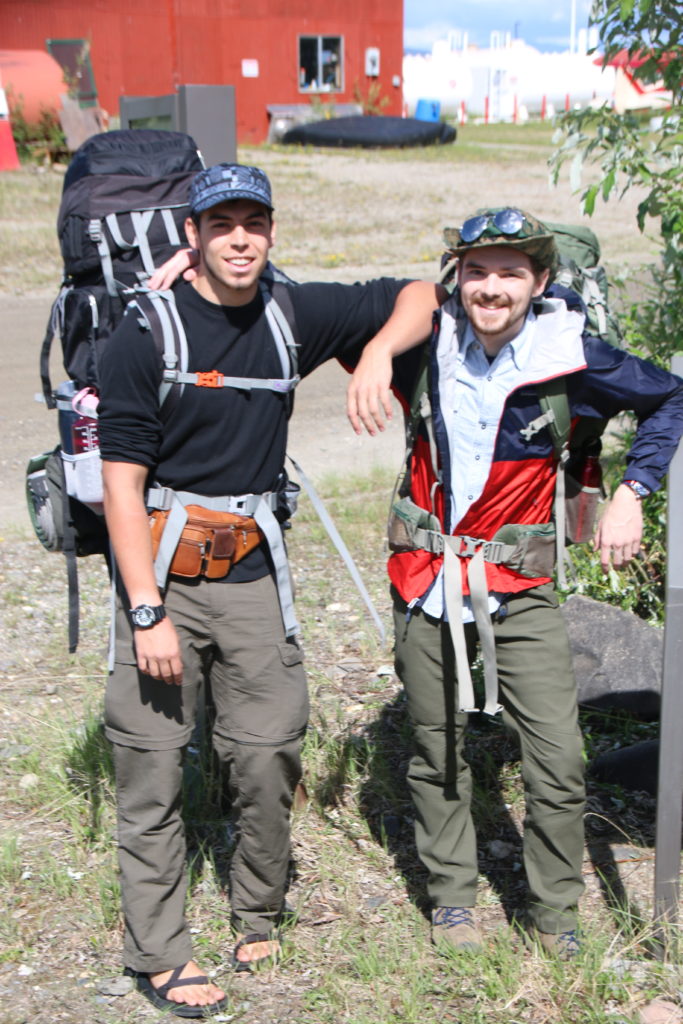
We were driven out of town, down to the other end of the gravel road, where a large pond held all of the float planes. These little planes were just about the only way in and out of the park, and Mitch and I squeezed into one of the smallest for our journey: a Cessna 180, with room for Mitch and the pilot in the front and just enough room for two backpacks and a cramped me in the back.
We took off my favorite way to travel, via water. Tom, our pilot, smoothly brought us around and into the Brooks Range, where the little cloud cover provided for some incredible sights of the mountains.
Forty short minutes later we dove into one of the valleys and circling around made a landing in Circle Lake, a small arc shaped lake nestled between the mountains. Bags unloaded, Mitch and I then stood in the marsh and watched as Tom and the little Cessna took off from the lake and disappeared from sight and sound. Tom would pick us up from the same spot in five days, in between we would be surviving just from our own knowledge and what we carried on our backs.
For the next five days, we were nowhere.
Part 2: Arrigetch
Circle lake was a landing spot just outside of Arrigetch, a series of stunning mountains and cliffs carved out by recent (in geological terms) glaciation. Some research of the area had really piqued our interest when we were first researching Alaska, and so the powerful peaks soon became our end goal.
According the ranger’s advice and what little information we could find on the area, it took about two full days to get into Arrigetch Valley from Circle Lake, with some hard trudging in between. Although we had never been to Alaska, we had been warned through reading and hearsay that hiking, especially in the wilderness, can be extremely slow going.
It took 15 feet to confirm that.
Mitch in hiking boots and I in my trusty Chaco sandals started our march north towards the entrance to Arrigetch Valley. Immediately we were amazed by how spongy and uneven the ground was. The entire hillside was covered in lumpy grassy mounds, known as “tussocks”. These tussocks are well documented by experienced Alaskan hikers, as the bane of any kind of forward progress. The grassy mushrooms can be anywhere from half a foot to two feet across, but are unfortunately EXTREMELY unstable, meaning that stepping on top of any of the mounds runs you a high risk of a twisted ankle. Instead, hikers must take care to find and step in small marshy gaps between the tussocks, which in some cases can even be ankle twisting pits themselves. In some areas, spongy moss under our feet compressed for an extra foot of give in each step. Between the tussocks, the sponge, and the fifty pounds on our backs, slow going is an understatement.
Oh but Alaska couldn’t make it just that easy. In addition to the incredibly tough terrain, the moisture and new light of the early summer mean that everywhere in the Alaskan wilderness plants are furiously growing in as their short season of life begins. Small but tough bushes sit knee high in all places, in others thick bushes prevent sight beyond a few feet directly ahead. Our first miles can only be described as mucking, snapping, and a whole lot of bushwacking. I quickly coined “Bulldozer” as Mitch’s trail name for his ability to barrel through some of the thicker bushes and shrubs.
Another result of the moisture and summertime was the onset of the most powerful creatures in Alaska: the mosquitos. The summertime brings them out in apocalyptic magnitudes. If there was exposed skin you could guarantee a mosquito would be there feeding, sometimes through bug nets, shirts, and mosquito repellent. We learned that out here the bugs are part of the environment, and that the only way to stay sane amidst the cloud of mosquitos was to accept there was no escaping them.
After about four hours of hiking (and one wrong turn) we set up camp on a rare dry patch just outside the valley, and took in the view from behind our much-needed mosquito headnets (thanks, Mom!). I boiled up some *gourmet* instant rice, and we settled in for a night of recovery from our first 2 miles covered.
Now when I say “night” it is the Arctic summer. The sun may dip below the horizon a couple minutes, but it will never get anywhere close to dark. If you aren’t careful you can hike, work, or goof around well into the night. For this reason Mitch and tried to enforce a 10:00 bedtime at nights, and stayed in bed until about 6:30 each morning, no matter how much that 1:30am light looked like a beautiful afternoon.
Sure enough around 7am the next day Mitch and I were packed, breakfasted, and ready to trudge. At the start of our journey today I assured Mitch that the walking would be better once we got into the valley. But if we are being honest I wasn’t sure of that myself, I just knew we had to make some serious headway, as we were beginning to tap into the second half of our water reserve.
So we did just that, placed one foot in front of the other and kept plodding onward with our packs. While the walking was difficult, I couldn’t argue with the incredible view everywhere I looked. This was an incredible place that many people would never see.
The key to difficult hiking like this is goal and reward. Work towards an attainable and concrete goal (like a tree or rock) in the distance, rather than just an abstract “end point” such as a spot on a map or in our case “the Arrigetch”. After an hour or so of working towards what looked like a rocky knob towering above the creek in the opening of the valley, we were excited to find it was a high and dry rescue from the marsh. We were clearly not the first to find it, as the brush had been cleared away where tents had been clearly pitched in the past, and in a clearing sat a fire ring. We named the place “Human Knob” as a reference on our map, and set our sights further into the valley.
To our surprise, outstretching from Human Knob was something we did not expect in the wilds of Alaska: a trail. A small narrow path, padded down from use by animals and humans alike, shone through an easier way through the thick forest ahead. Following the trail, our speed for the day tripled, grateful for every step on solid ground we took.
It turns out I had been correct in my assessment, once we got into valley, the added elevation took us from the tussocks and sponge, instead bringing us into think forested brush and marsh. The trail helped a good bit, showing us where humans and animals had pressed through before, but the season’s furiously growing plants meant there was plenty of bulldozing to be done. Interspersed on the path was also the occasional “scree” patch, areas where we were forced to carefully hop between tops of large boulders to pass through. Each corner afforded more adventure!
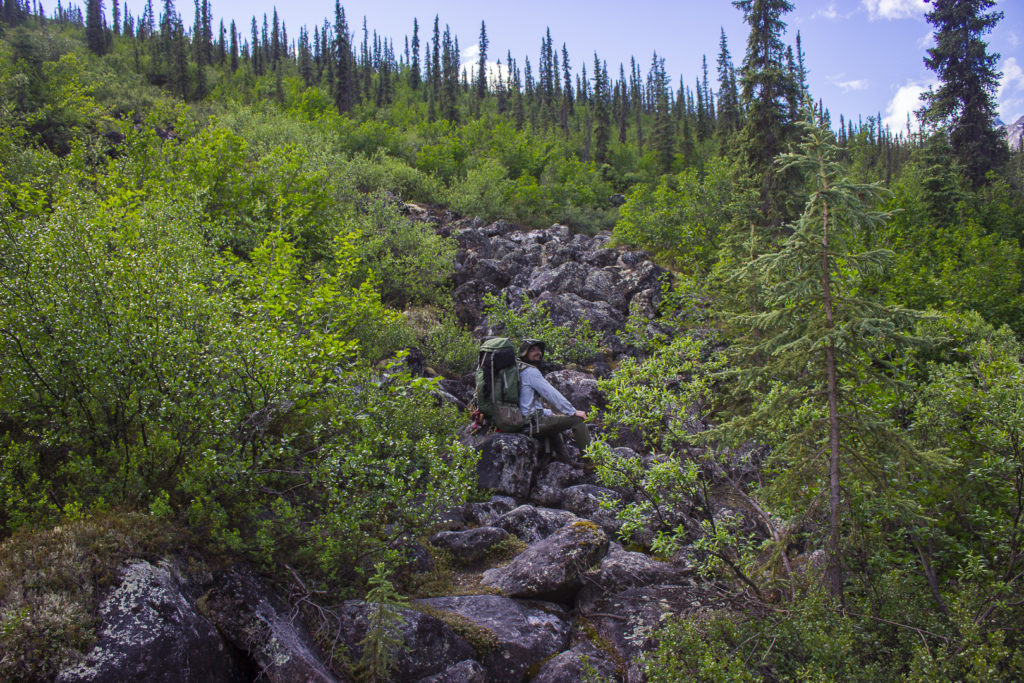
By the time we stopped for lunch, we had gained our first sneak peek at the Arrigetch peaks.
The path set, water refilled from the creek, and the sun high (as it always was), we set out for the mountain ahead.
The hike was incredible. Climbing through evergreen forests, mucking through marshland, crossing streams along the way, even recording about half mile walking on an ice sheet!
It all paid off when we arrived to our planned camping spot, “the Fork”, where Arrigetch creek split into two smaller creeks, all encircled by stark and powerful mountains.
The name “Arrigetch” was given to the area by the native people, who give it this name from a legend of creation. When the world was still young and humans much younger, one of the gods taught them all the ways to hunt and get meat in the Brooks Range, from trapping small animals to the essential techniques of hunting caribou. When the god had finished teaching them, his hand became the mountains, as a reminder of his guidance in the wild for the people, and thus they named the mountains “Arrigetch” meaning “fingers of the hand outstretched”.
The only word I can use to describe the valley is powerful. I felt small, I felt in the presence of incredible forces of nature, and I knew I was sitting in a valley of the Gods of Old.
All in all, with the trail, Mitch and I had made great time. Leaving our marsh camp at 7:00, and we were settled into the valley by 5:30. By 6:30 were we full of a hearty chicken and rice meal, leaving plenty of room for photos and planning hikes for the next two days in the valley.
Our next two days we left our camp in the same place, and ventured deeper into the Arrigetch on day hikes. Our first day we ventured into the southern fork, towards where our map had depicted a series of alpine lakes nestled between the stark peaks.
As we followed the creek and grew closer to the mountains, the brush fell away to meadow, and meadow to rocky scree slope. All the while the mountains grew more impressive and powerful before us.
After a while of careful scaling of the rocky cliffside, we were rewarded with an incredible sight: crystal blue waters between the stone mountains.
Lunch, and more importantly, a quick swim were warranted before returning to camp.
The scenery going was just as great on the way up.
The next day we set out into the north fork of the valley, and into the true “Arrigetch Peaks”. The brush quickly gave way to meadow, making for easy hiking until we crossed above the alpine line, leaving nothing but unstable scree boulders for us to carefully navigate. But as luck would have it, the creek was flanked on both sides by thick ice, which we chose to walk on instead of the uneven boulder hillside. With a bit of ice and marsh (created from fresh melted ice) walking we soon rounded the corner into full view of Arrigetch peaks.
Not once was I ever not in amazement of these incredible peaks. If ever I was slowed for moment, I could always look at the peaks and marvel at their impressive beauty.
After lunch in the valley, Mitch and I began eyeing the large scree slope at the end of the valley, and we started considering the implications of attempting to scramble up the steep boulder field. With the promise of an expansive snowfield and the burning sense of adventure in our hearts, we couldn’t resist the opportunity of a good climb.
And like any good climb, it was a tough one. And like everything in Alaska, we soon realized this would be a much more intensive task than we had thought. One slope was actually two large slopes, with one set a good deal back from the other.
Walking on the slope felt like walking on another planet. The rocks strewn about were covered with red lichen, and streams of water appeared and disappeared from the surface with no particular reason. In flat areas, amorphous sand saturated with glacier water created incredible patterns, and bounced back into form like no other ground I had ever walked on.
The tough climb rewarded us with incredible close up encounters with the mountains, not to mention an amazing view of the valley. Up with the sheer mountain walls and the mountain sheep (we even got up close with a few of them!), it felt like the beginning of everything.
A careful climb back down, and we returned to camp for dinner.
But before we could call it an Arctic Night, we realized that it was the Summer Solstice, the first day of summer and therefore the first day in the Arctic that the sun would not set, only touch the horizon at midnight. This had been our original reason to venture up this way: a chance to see the sun at midnight.
One problem: we were in a mountain valley. The mountains to our north had blocked our view of the sun every night, giving us a “shade”set around 8:30 every night. If we were going to see this midnight sun, we would need some elevation.
So around 8:30pm, we set out to try and scale the mountain directly north of our camp. The mountain had no major outstanding cliffs, and offered us the opportunity to get a bird’s eye view of everything we had hiked the past two days.
The plan was simple: walk straight up, rest whenever we get tired, and in a few hours crest the peak.
Alaska sure has a knack for proving me wrong doesn’t it.
The first section was steep, but that was expected. We were on pace. The next section was still steep, and it was starting to get pretty tiring. The third section, now that was pretty far from camp, where we had mapped our line, and turns out, it’s a pretty long way. We walked 2,500 feet straight up, but we knew with another ~700 feet at minimum, this mountain was not the best choice in second hike of the day. We rested and instead turned around to marvel at the view of the valley that had been our home the past three days. Up here, rather than feeling small, I felt powerful, as if I was one of the mountains myself.
Hiking back down the light of the midnight sun eased our descent a good bit, and we were cozied up in our sleeping bags by 1am.
Our next day we needed to start working our way back towards Circle Lake, as we would be meeting Tom and the Cessna the following day. Mounting our camp on our backs, we bid the valley one last goodbye and set out on the trail.
We ate lunch at the same spot we had used on our venture inward. As we finished up a post-lunch siesta, we were started by the sounds of noise approaching us.
Though it did not sound like any creature I had ever heard, I readied my bear spray all the same. No, we quickly realized it was the sound of a cowbell. A lone hiker was using it as a noisemaker to ward off bears, though it appeared she had paused at our bags further up the trail. We went up the trail to greet her and began some hiker small talk.
The ranger had only mentioned one other person who would be in the valley at same time as us, a solo climber named Sílvia.
It turns out she had us really beat. She would be spending 60 days out in Arrigetch, solo climbing one of the incredibly powerful peaks. She would be spending a month hanging from the side of the mountain face, with two weeks on either end of the trip lugging around all of her food and equipment needed for the entire journey. After lugging all of her food to a camp just outside the valley itself, she was just starting to scout into the valley for her next point to begin bringing in all of her stuff.
Since we would be spending our night at the edge of the valley as well, Sílvia invited us to join her camp for the night. We happily agreed, and she strode off into the woods.
We continued on our way, fighting bushes and marsh as we worked our way to the edge of the valley. At about 4:30 we paused just in time to see Sílvia, weighed down by a barrel on her back that was bigger than she was, trudging up the hill towards the valley.
“My camp is just right there, you’ll see it. I’ll be back tonight, see you then!” And with that she marched up the steep hill with her food barrel.
Yup. We had definitely just met Wonder Woman.
Camp set up and a relaxing dip in the creek, Sílvia soon returned and we all swapped stories of our various adventures. Sílvia had come all this way from Spain, and incredibly this was far from her first 2-month solo climbing adventure. Our impression of her complete awesomeness was entirely true, as we would come to find out, and you can read all about her 20 year career as a climber on her website here. For our last night in the wild, we were happy to share it with Sílvia.
The next morning we all packed up and said our goodbyes. Sílvia gave us an email to send to her boyfriend, who would be pleasantly surprised at receiving any message from her during her two months away. We in turn reassured her that she did not need to be terrified of the bears, as we had seen almost no sign of them while we were in the valley.
We plunged through the marsh, sponge moss, and tussock, pressing through for three hours to cover our final two miles of our journey. Hey at least this time we knew what to expect. We arrived in time for some last minute photos of us, my trusty walking stick, and some proof that even in the wilds of Alaska Chaco sandals are my shoe of choice.
We arrived at Circle Lake, and our favorite pilot from Brooks Range Aviation Tom was right on time to pick us up, this time in a de Havilland DHC-2 Beaver. We were gettin’ out of the wild in style.
Part 3: Returning to Society, Step by Step
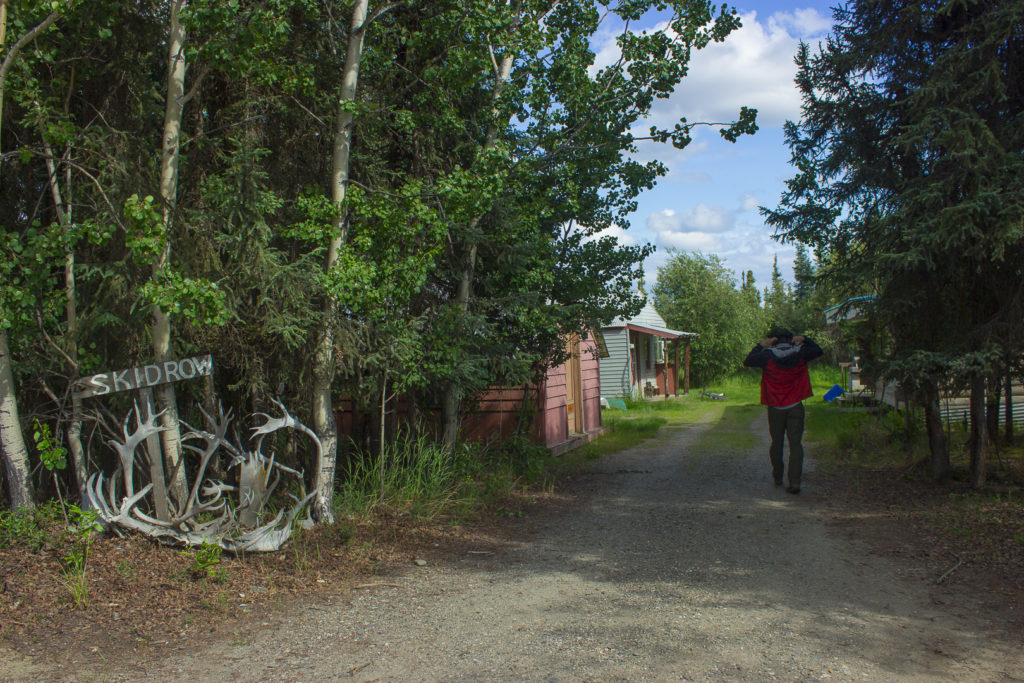
Our flight back to Fairbanks left from Bettles the next day, giving us an unexpected evening and morning in little Bettles, Alaska. Judy and Jay at Brooks Range Aviation were incredibly accommodating, allowing us to stay in a small bunkhouse on their property (beds included, no need for a tent!), and food available to us from the store at an incredibly fair price all night long.
We spent the first part of our recovery afternoon at the ranger station, relaying our observations of the area to the Park Service team, and learning all we could about the incredible area we were just living in.
Some food from the Brooks Range store to fill our bellies, we discovered the store serves as somewhat a center of commerce for the locals, who were all happy to talk to us tourists about life in Northern Alaska. Before we even realized it, we were on our way over to Bettles Lodge for a celebration beer and story swapping. The lodge owners were incredibly inviting, and the sunlight evening wound down with friendly smiles all around.
The next day we caught our plane back to Fairbanks, but not before some last minute chatting with the locals in the store. Turns out people from all over make their way to Bettles, Chicago, NC, even Jackson Hole Wyoming! We were sad to leave Bettles behind so soon.
Then again, we were looking forward to some showers in Fairbanks.
In Fairbanks Mitch and I had reservations at Downtown Hideaway Bed and Breakfast, which turned out to be a series of apartments and houses tucked away right next to downtown Fairbanks. The entire operation is owned by Allan and Verna, the most gracious hosts that you could ask for. After picking us up from the airport, Allan and Verna showed us our own apartment (with a long anticipated shower), along with our own breakfast-stocked kitchen, free bicycles, and even took the time to explain a detailed map pf activities and eats and in Fairbanks. If you are ever in Fairbanks in need of accommodations, I can promise you that you won’t do better than Allan and Verna at Downtown Fairbanks Log Cabin Bed and Breakfast!
Two days later it was time to make the next jump back to civilization, and go from little restful Fairbanks to the Alaskan city of Anchorage! We would be traveling in style though: an all day train ride, complete with a separate dining car and dome ceiling for viewing breathtaking scenery as we rolled past.
Our last day in Alaska was spent reunited with our parents, who had just finished a cruise up the inside passage. The four of us spent our last day in Alaska the best way imaginable: with two helicopters and a very impressive glacier.
The conditions for glacier viewing and helicopter flying were supreme, as such it was the flight of a lifetime.
Wrapping Up: Alaska squished into three paragraphs and too many photos
This 1.5 weeks in Alaska has been so chocked full of adventure it’s unimaginable. We’ve see only the tip of the iceberg here. Every place we’ve been to has only given more ideas for going back, and that doesn’t even include all of the places we wanted to go but couldn’t! Alaska is big, 1/3 the size of the continental US (11 times as big as lil ol’ North Carolina), and with at least 3 times as much to see.
Though, the theme of this trip has been the people of Alaska. From taxi driver/bush guides, to incredibly friendly pilots, to the laid-back community of Bettles, the people have made our journey incredible. Not to mention we met 5 different North Carolina natives! Talk about some southern hospitality on the other side of the world!
A special shout out to all these people:
-Rick: touring Alaska and all the National parks from the back of your minivan, keep adventuring!
-Judy and Jay: thank you for making our trip to Arrigetch not only possible, but worry free! Brooks Range Aviation is number one!
-Pilots and workers of BRA and Wrights Air Service: friendliness above and beyond we could have imagined. These people know what they are doing, especially in those planes!
-Dalelynn and workers in NPS Bettles (especially Becca and Noel): thank you for all the information on the park, and for helping us feel welcome in Bettles! For anyone who doesn’t know, the NPS has a rockin’ documentary on Gates of the Arctic, this critic gives it 5 stars!
-Community of Bettles: I don’t think we could find one unfriendly soul in all of Bettles! We may have been the tourists for the day, but everyone’s incredible friendliness made us feel right at home, from BRA store, to the bunkhouses, to the NPS office to the owners of Bettles Lodge and their friendly service!
-Sílvia: Mitch and I are cheering you on! We can’t wait to hear about your adventures in Arrigetch and beyond! We are cheering you on, Mujer Maravillosa 🙂
-Allan and Verna at Downtown Fairbanks Log Cabin Bed and Breakfast: incredible service, and some of the nicest hosts we have ever had! Everything we could have dreamed about for recovering in Fairbanks and more!
-Taylor and workers at Alpine Air Alaska: thank you for the absolutely amazing and perfect last day. Pilot Taylor is the best helicopter pilot you can find, hope everyone can have as much fun as we did!
You can see all of my photos in one place on my flickr page, be sure to check them out!
Until next time, Alaska!
